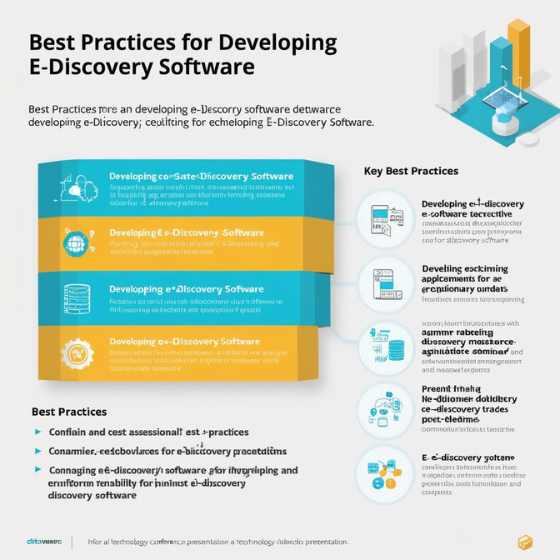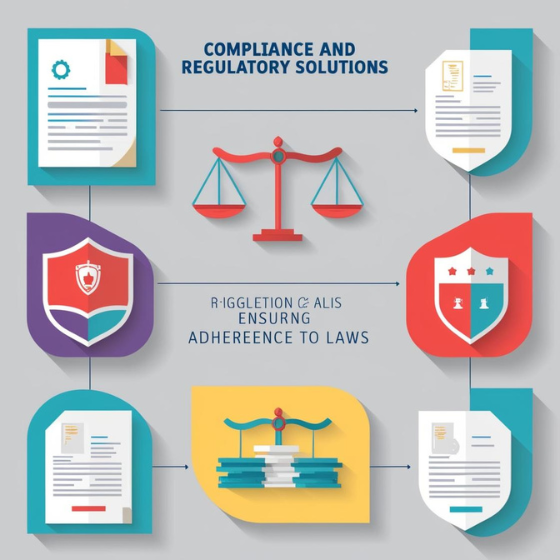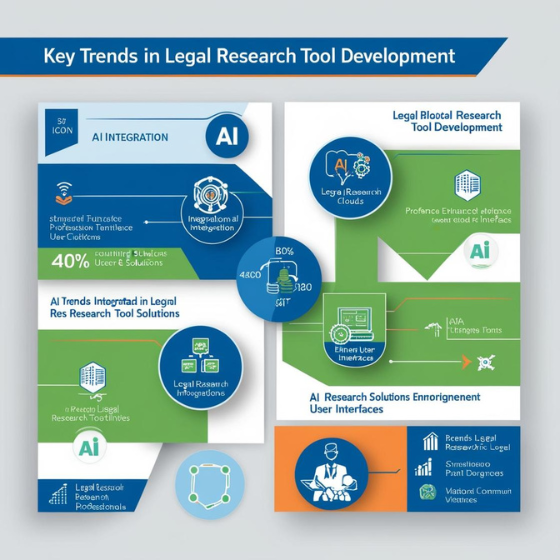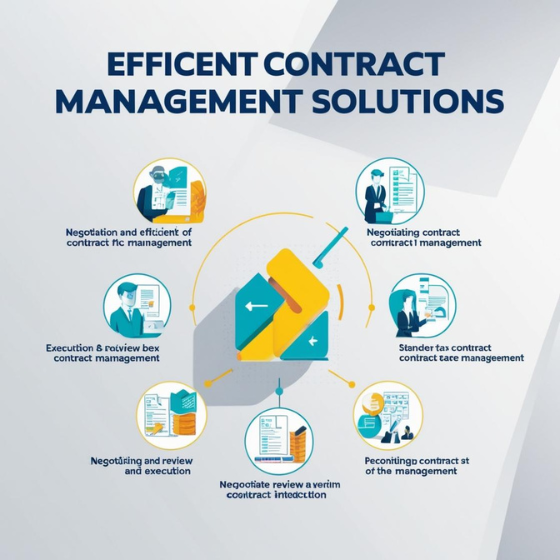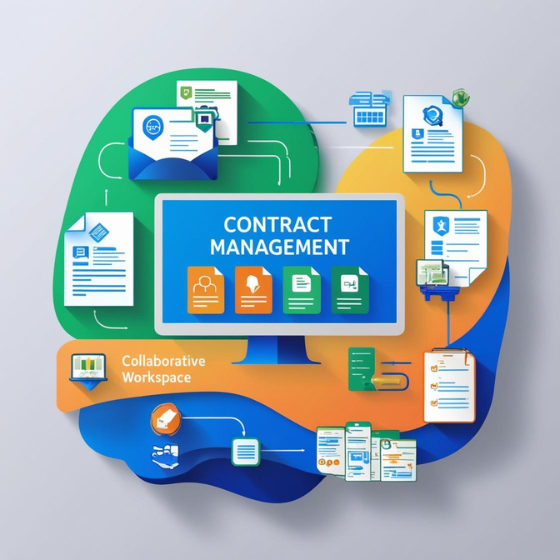Best Practices for Developing E-Discovery Software
In today’s digital era, the need for e-discovery software has never been more critical. As legal cases increasingly involve vast amounts of electronic data, the traditional methods of document review and legal research have become inefficient and costly. E-discovery software simplifies the process, helping legal professionals locate relevant documents and manage massive data sets efficiently. However, developing effective e-discovery software requires careful consideration of several best practices. This blog will guide you through these practices, helping you build robust software solutions that can support legal teams in their day-to-day operations.
What is E-Discovery Software?
E-Discovery software is designed to assist legal professionals in managing and analyzing electronic data during legal cases. It streamlines the process of identifying, collecting, processing, and reviewing documents, emails, and other digital evidence that are crucial for litigation. In cases involving a large volume of electronic information, manual processes can be slow and error-prone, making e-discovery software essential for any legal team.
Key Best Practices for Developing E-Discovery Software
1. Prioritize Scalability
One of the most crucial aspects of developing e-discovery software is ensuring that it can scale effectively. Legal cases can vary widely in the amount of data they involve, ranging from a few documents to terabytes of data. Therefore, your software should be able to handle large datasets efficiently.
Key Points:
- Cloud Infrastructure: Implement cloud-based solutions to ensure flexibility and scalability as the volume of data grows.
- Load Balancing: Use load balancing to distribute processing power effectively, preventing slowdowns as data volume increases.
- Elastic Storage: Allow the software to dynamically adjust storage based on usage, enabling teams to scale up or down as needed.
Scalability ensures that the software remains effective regardless of the size of the legal case.
2. Implement Advanced Search and Filtering Capabilities
Efficient search functionality is at the core of any e-discovery software. Legal professionals often need to sift through enormous volumes of data to find relevant documents. Incorporating advanced search and filtering options can significantly enhance the user experience.
Key Points:
- Keyword Search: Ensure the software includes powerful search algorithms that can locate documents containing specific keywords.
- Metadata Search: Implement metadata filtering (e.g., author, date, file type) to refine searches and help users find relevant documents faster.
- Boolean Search: Use Boolean operators to allow users to combine terms and perform more precise searches.
Advanced search capabilities will save valuable time and effort during the e-discovery process, making the software more effective and user-friendly.
3. Ensure Robust Data Security and Compliance
Given the sensitive nature of legal data, security should always be a top priority when developing e-discovery software. Law firms and organizations need to ensure that their data is protected from unauthorized access, tampering, or loss. Additionally, the software must comply with various legal and regulatory standards, such as GDPR or HIPAA.
Key Points:
- Data Encryption: Implement end-to-end encryption to protect sensitive information both at rest and in transit.
- Access Control: Include role-based access controls (RBAC) to restrict data access based on user roles, ensuring that only authorized individuals can view or modify sensitive information.
- Audit Trails: Maintain detailed logs that track who accessed or edited files and when. This can be critical for ensuring compliance and resolving any disputes.
Security features like these will not only protect sensitive data but also help your software meet legal and regulatory requirements.
4. Automate Document Review and Categorization
Manual document review is one of the most time-consuming aspects of the e-discovery process. By automating certain tasks like document categorization and review, you can significantly speed up the discovery process and reduce human error.
Key Points:
- AI-Powered Document Tagging: Use machine learning algorithms to automatically tag documents based on their relevance to the case.
- Predictive Coding: Implement predictive coding to allow the software to learn from previous decisions, improving the accuracy of document categorization.
- Redaction Tools: Automate the redaction of sensitive information to ensure that documents are only shared with authorized parties.
Automation not only enhances efficiency but also improves the accuracy of the review process, ensuring that critical documents are flagged and reviewed appropriately.
5. Focus on User Experience (UX) and Intuitive Design
A complex and difficult-to-use interface can severely hinder the adoption of your e-discovery software. Legal professionals need software that simplifies their work, not adds complexity. Ensuring a user-friendly interface and intuitive design should be a priority during development.
Key Points:
- Clear Interface: Use clean, uncluttered layouts with simple navigation options to make it easy for users to perform tasks.
- Customizable Dashboards: Allow users to customize their dashboards to focus on the information that is most important for their work.
- Training and Support: Provide ample training resources and a responsive customer support team to assist users as they get familiar with the software.
By ensuring that your e-discovery software is easy to use, you will increase user adoption and overall satisfaction.
6. Enable Seamless Collaboration and Integration
E-discovery often involves a team of legal professionals, from attorneys to paralegals. For the process to run smoothly, your software must allow for seamless collaboration and integration with other tools commonly used by legal teams, such as document management systems and communication platforms.
Key Points:
- Cloud Integration: Use cloud-based solutions to allow teams to collaborate in real-time, regardless of their location.
- Third-Party Integrations: Allow for easy integration with popular software used by law firms, such as document management systems and case management tools.
- Version Control: Implement version control features to ensure that all team members are working on the most up-to-date documents.
By enabling easy collaboration, your software will become an essential tool for legal teams, improving productivity and teamwork.
7. Maintain Flexibility and Adaptability
The legal landscape is always evolving, and so are the needs of legal professionals. Your e-discovery software should be flexible enough to adapt to changes in technology, legal requirements, and industry standards.
Key Points:
- Customizable Features: Allow users to tailor the software to their specific needs, such as adding custom search filters or tagging systems.
- Regular Updates: Stay on top of legal and technological changes by providing regular software updates that improve functionality and keep the software in compliance with the latest regulations.
- User Feedback Loop: Implement a system for gathering feedback from users to identify areas for improvement and ensure the software continues to meet their needs.
By staying adaptable, your e-discovery software will remain relevant and valuable in an ever-changing legal environment.
Conclusion
Developing effective e-discovery software requires a deep understanding of the legal industry and its challenges. By prioritizing scalability, advanced search capabilities, data security, and a user-friendly interface, you can create software that streamlines the discovery process, reduces costs, and enhances efficiency for legal teams. With the right approach, e-discovery software can revolutionize the way legal professionals handle electronic data, ultimately improving the outcomes of their cases.
If you’re interested in exploring how e-discovery software can enhance your legal team’s productivity, contact us at Sodio today to learn more about our solutions.
